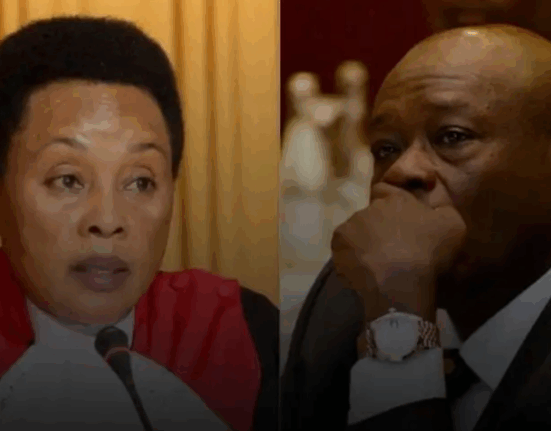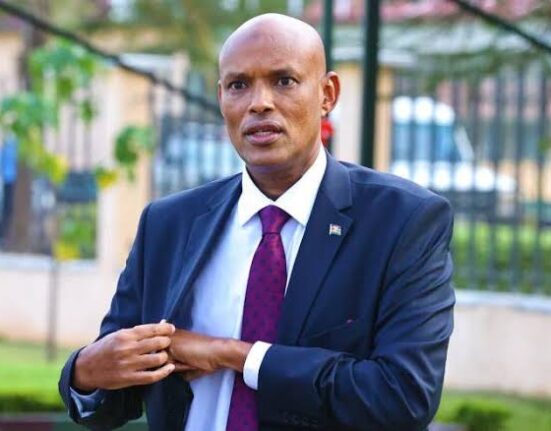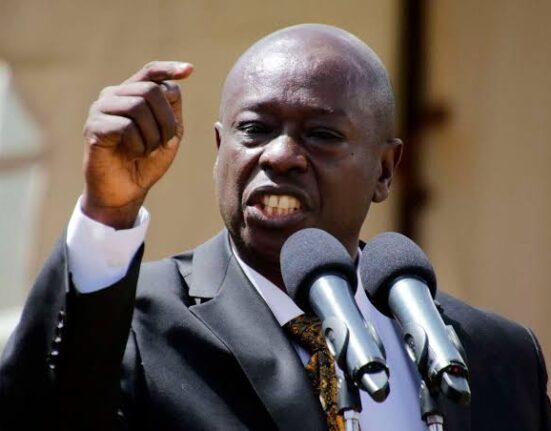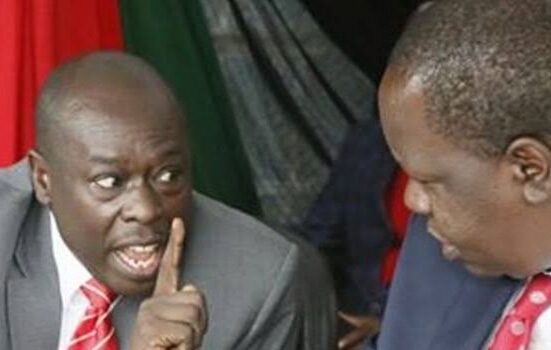By Japheth Imanene
The launch of former Deputy President Rigathi Gachagua’s Democracy for the Citizens Party (DCP) was meant to herald a seismic shift in Kenya’s political landscape.
Instead, it devolved into a spectacle of chaos, exposing the party’s flaccid persona and its inability to transcend the very flaws it claims to oppose. From its bloated leadership structure to its reliance on recycled rhetoric, the DCP now resembles a creaking dhow struggling to navigate waters dominated by modern political steamships.
The DCP’s unveiling on Thursday May 15, 2025, began with promise but swiftly unravelled into bedlam. Masked assailants stormed the event in Nairobi’s Lavington area, prompting Gachagua’s security to fire live rounds into the air. Attendees fled in panic, journalists were harassed and the veneer of order dissolved into a scene more reminiscent of a street brawl than a political rebirth.
Interior Cabinet Secretary Kipchumba Murkomen later confirmed that the DCP had failed to notify police of the event, a staggering oversight for a party claiming to champion accountability.
Worse, preliminary investigations revealed the violence stemmed from internal disputes over unpaid supporter allowances itself, a damning indictment of Gachagua’s organisational incompetence.
The launch optics were nothing but catastrophic for a party pledging to “listen to Kenyans” yet it could not even manage its own ranks.Gachagua’s attempt to project a pan-Kenyan appeal collapsed under the weight of his choice of party leaders.
With interim officials including Cleophas Malala as deputy party leader, Mithika Linturi, national organiser and Cate Waruguru as women’s leader, the line-up is predominantly a Mt Kenya affair. This recycled roster undermines claims of inclusivity, revealing a party tethered to ethnic calculus rather than national vision.
Critically, the party failed to articulate concrete policies. While lambasting President William Ruto’s housing levy and Hustler Fund, Gachagua proposed no viable alternatives.
His critique of Kenya’s “reckless borrowing” and “punitive taxation” echoed opposition talking points but lacked originality. Even the party symbol—a listening ear—felt ironic given Gachagua’s history of inflammatory rhetoric, including ethnic divisiveness that contributed to his impeachment.
The DCP’s launch exposed a fundamental disconnect with Kenya’s evolving political terrain. Parties like UDA and ODM have harnessed digital mobilisation, data-driven campaigns, and policy-specific agendas.
By contrast, Gachagua’s strategy, largely reliant on tribal alliances, cash hand-outs, and roadside grandiose is a relic of the 1990s.
His promise to embark on a two-year “nationwide tour” mirrors out-dated tactics, ignoring the reality that 60% of Kenya’s population is under 35, a demographic that engages through TikTok debates and X Spaces, not village barazas. Meanwhile, the DCP’s refusal to disclose funding sources and its reliance on defectors from discredited regimes further erode its credibility.The DCP’s struggles mirror Kenya’s long history of “briefcase parties” and political vehicles created for personal ambition rather than public service.
Gachagua’s attempt to position himself as a “moral insurgent” also falters under scrutiny. His alliance with figures like Fred Matiang’i, a former Interior CS accused of authoritarian tactics undercuts claims of democratic renewal.
Rigathi Gachagua’s DCP failed party launch is a metaphor for Kenya’s stagnant opposition politics. By clinging to ethnic mobilisation, vague sloganeering, and out-dated tactics, the party has already ceded ground to more dynamic forces.
In an era where voters demand transparency, innovation, and accountability, the DCP’s wind-driven dhow cannot compete with the steamships of modern governance. Unless Gachagua pivots from personal vendettas to policy substance, his party will remain adrift and yet another moot attempt to kindle a fresh start in Kenya’s turbulent political seas.
Imanene is a student of Law












Leave feedback about this